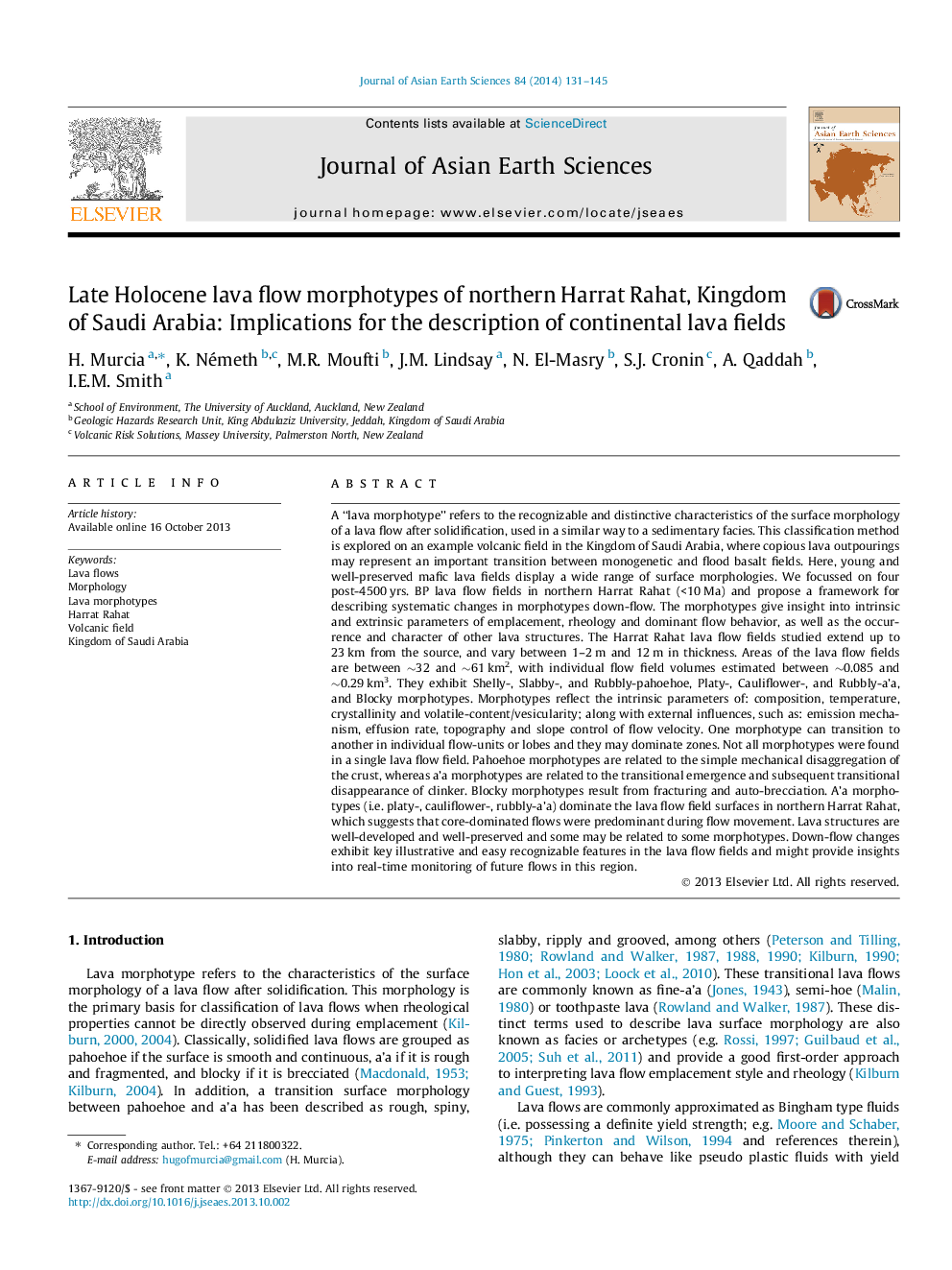| Article ID | Journal | Published Year | Pages | File Type |
|---|---|---|---|---|
| 4730752 | Journal of Asian Earth Sciences | 2014 | 15 Pages |
•We examine surface morphology exhibited by lava flows in northern Harrat Rahat.•Shiny, smooth and unbroken morphologies (c.f. Hawaii) are not present in the flows.•The use of seven morphotypes best characterize structural changes along the flows.•Very well-preserved lava structures related to the morphotypes were also documented.•The morphotypes provide insights into emplacement mechanism of lava flows.
A “lava morphotype” refers to the recognizable and distinctive characteristics of the surface morphology of a lava flow after solidification, used in a similar way to a sedimentary facies. This classification method is explored on an example volcanic field in the Kingdom of Saudi Arabia, where copious lava outpourings may represent an important transition between monogenetic and flood basalt fields. Here, young and well-preserved mafic lava fields display a wide range of surface morphologies. We focussed on four post-4500 yrs. BP lava flow fields in northern Harrat Rahat (<10 Ma) and propose a framework for describing systematic changes in morphotypes down-flow. The morphotypes give insight into intrinsic and extrinsic parameters of emplacement, rheology and dominant flow behavior, as well as the occurrence and character of other lava structures. The Harrat Rahat lava flow fields studied extend up to 23 km from the source, and vary between 1–2 m and 12 m in thickness. Areas of the lava flow fields are between ∼32 and ∼61 km2, with individual flow field volumes estimated between ∼0.085 and ∼0.29 km3. They exhibit Shelly-, Slabby-, and Rubbly-pahoehoe, Platy-, Cauliflower-, and Rubbly-a’a, and Blocky morphotypes. Morphotypes reflect the intrinsic parameters of: composition, temperature, crystallinity and volatile-content/vesicularity; along with external influences, such as: emission mechanism, effusion rate, topography and slope control of flow velocity. One morphotype can transition to another in individual flow-units or lobes and they may dominate zones. Not all morphotypes were found in a single lava flow field. Pahoehoe morphotypes are related to the simple mechanical disaggregation of the crust, whereas a’a morphotypes are related to the transitional emergence and subsequent transitional disappearance of clinker. Blocky morphotypes result from fracturing and auto-brecciation. A’a morphotypes (i.e. platy-, cauliflower-, rubbly-a’a) dominate the lava flow field surfaces in northern Harrat Rahat, which suggests that core-dominated flows were predominant during flow movement. Lava structures are well-developed and well-preserved and some may be related to some morphotypes. Down-flow changes exhibit key illustrative and easy recognizable features in the lava flow fields and might provide insights into real-time monitoring of future flows in this region.
Graphical abstractFigure optionsDownload full-size imageDownload as PowerPoint slide
